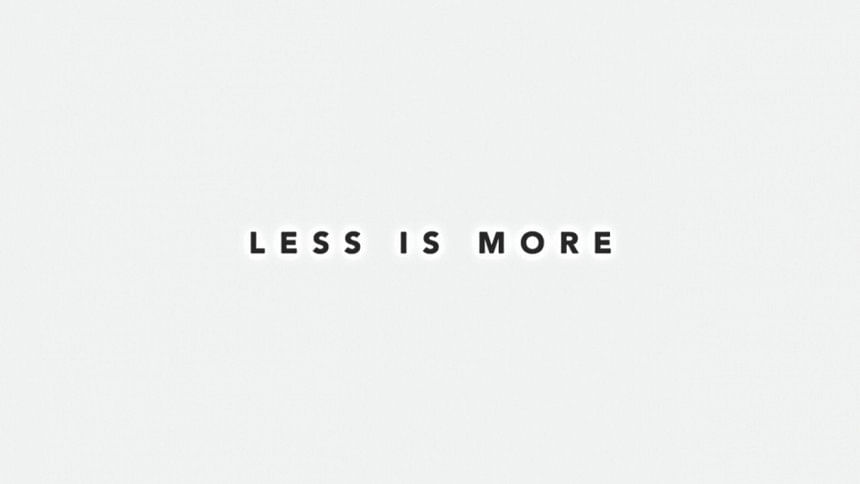Minimalism: A Beginner's Guide

Although minimalism has become commonly associated with aesthetics, minimalism goes far beyond style and décor— it is the idea that our lives can be simplified by living minimally which can help anyone who's looking to de-clutter their lives- be it a relationship or a wardrobe.
There are no specific guidelines on the minimalist approach. It's very subjective since the aim is to simplify in a way that brings efficiency and happiness to the individual. Although, there are some ways to initiate and facilitate the process.
CHOOSING A THEME
Going back to the point on aesthetics, many people do prefer picking a theme to stick to when approaching minimalism. This is in no way mandatory. Picking a theme can help the process since it makes it easy to understand what to keep and what to discard or redistribute. A theme may also be more aesthetically pleasing for some. However, there are other ways in which the simplification can be approached. If you do decide to go with a theme, pick something that you enjoy.
FOCUSING ON A SPECIFIC AREA
Instead of purging your whole space altogether, focus on individual areas at a time. Have a cluttered desk? Take all items off it and individually assess what you will keep and what you won't. Do the same with other areas like shelves, drawers and closets. Focusing on one area at a time will allow you to invest more headspace into the process so you can make better decisions and be more mindful of your possessions. This also helps you get rid of more things at a time and prevents accidentally getting rid of important things.
PICKING WHAT STAYS AND WHAT GOES
Setting up a system to analyse will always streamline your process. With clothing, for example, choosing to discard items you have not worn in the span of a year is a good indicator. Relationships that bring negativity and frustration instead of motivation and happiness should be let go. Fixing indicators for the various items will help you understand what you truly need with more clarity. Only keep the things you need or see yourself needing in the near future — the rest should go.
PURCHASE BETTER
The best thing to do when taking a minimalist approach is to decide on purchasing less and using current possessions more. However, when you do have to shop focus on versatility and quality over quantity. The easiest way to prevent clutter is to stop introducing unnecessary items that hog the space.
FOLLOW UP PERIODICALLY
Assign a periodical follow up for each general category and repeat the process to ensure you remain clutter-free. For example, you can sort out your clothing every four months or so. Reassess and reflect on your environment from time to time to maximise the utility of your physical and mental space.
Becoming a minimalist can be therapeutic for many, especially those who are looking to turn over a new leaf. It's a continuous process and sometimes requires confronting and breaking habits that do not serve. It requires time and patience but is often immediately beneficial.
Nooha Sabanta Maula is an Anthropology major whose anthropologising has made her confused about life. Send her your thoughts to [email protected]

 For all latest news, follow The Daily Star's Google News channel.
For all latest news, follow The Daily Star's Google News channel. 



Comments